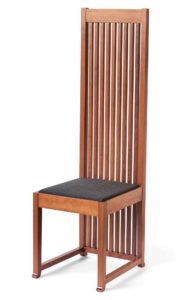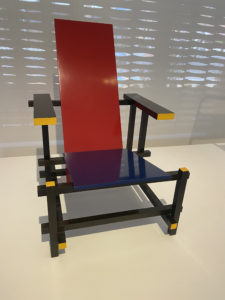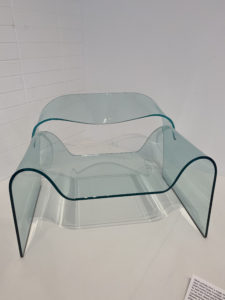Luxury must be comfortable otherwise it is not luxury.
~ Coco Chanel
FURNITURE PIECES
Designing the DTS interiors is similar to designing a city. Elements fulfilling individual purposes must be placed and designed in a complementary assemblage creating an intentional environment that is both aesthetic and functional. The furniture pieces are of the utmost importance to the quality of this assemblage and the DTS living environment expressing how function and form, purpose and design properly aligned work together to create an authentic aesthetic. Each piece of furniture must have qualities and character that give it an individual identity making it significant in and of itself. Simultaneously, the same qualities and character must make the piece able to group with other pieces to support larger architectural intentions. The character of a furniture piece is the combination of how it functions, its design, and its construction. When the functional fulfillment, the design aesthetic, and the manner of construction all align and reinforce each other, the furniture piece becomes a work of art. This is very different though, than purposely designing a furniture piece as a work of art. Unless the furniture piece is strictly designed for storage, part of its function is always to positively respond to the human body and provide comfort. Much furniture, especially if designed by architects, is often criticized for prioritizing concerns other than comfort. Frank Lloyd Wright often stressed the architectural qualities of structure and order over comfort and believed it necessary to design furniture that expressed qualities similar to its architectural setting. But furniture serves a different purpose than architecture. Other architects and designers have emphasized sculptural and material qualities over comfort with many so precious they serve only a visual function. Gerrit Rietveld’s Red Blue Chair is known for its colorful expression of Constructivist ideals, not comfort. Cini Boeri’s Ghost Chair expresses the unique qualities of glass but does not invite one to sit.


Furniture pieces can certainly express structural, sculptural, and material concerns, and can serve a functional purpose, but if a furniture piece is not comfortable it does not serve the purpose of furniture. Comfort is not an entirely objective term. Definitions range from a state of physical ease and freedom from restraint to the feeling of well-being associated with contentment and satisfaction. The physical manifestations of however you define comfort will vary somewhat from person to person based upon both their physical and psychological make-up. Thus, the decision to what extent furniture design accentuates the particular and or focuses on the universal is of the utmost importance. Each DTS furniture piece must be functional, serve a universal and a particular purpose or multiple purposes, have enduring aesthetic qualities, be constructed to last, complement the ensemble, and have a luxurious comfort. Although furniture serves a different purpose than architecture, furniture design can express many common themes and in doing so reinforce the architectural intentions. Furniture design should look back to history and innovate looking forward. Furniture design can use the power of industrial processes or the uniqueness of the handmade. But no matter what themes underlie a particular furniture piece, for it to be cherished it must be designed, made, and utilized with love, care, and purpose.
A chair is a very difficult object. A skyscraper is almost easier. That is why Chippendale is famous.
~ Mies Van de Rohe

